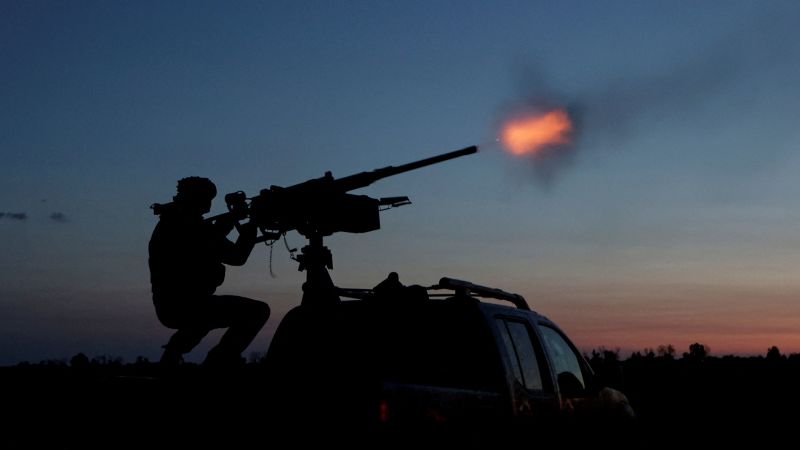US Shifts Anti-Drone Tech from Ukraine to Middle East, Boosting Force Protection

In a strategic shift to bolster force protection in the Middle East, the Pentagon has informed Congress of its decision to redirect critical anti-drone technology initially earmarked for Ukraine. This move, confirmed by CNN and sources familiar with the matter, reflects the evolving security landscape and the US military's need to address emerging threats in the region.
The decision, formalized in a recent congressional notification, involves diverting advanced counter-drone systems intended to aid Ukraine in its ongoing defense against Russian aggression. Instead, these systems will now be deployed to support US Air Force units operating in the Middle East, where drone threats have become increasingly prevalent and sophisticated.
Why the Shift?
The rationale behind the redirection centers on the urgency of safeguarding US personnel and assets in the Middle East. Recent escalations and heightened tensions in the region have resulted in a significant increase in drone-based attacks and reconnaissance activities. The Pentagon determined that prioritizing the deployment of these anti-drone technologies to US forces was essential to maintaining operational readiness and minimizing potential risks.
“The security environment in the Middle East demands our immediate attention,” stated a senior defense official, speaking on background. “These counter-drone systems provide a crucial layer of defense against a rapidly evolving threat, and their deployment to our forces in the region is a necessary measure.”
Impact on Ukraine?
While the move has raised questions about the potential impact on Ukraine's defense capabilities, the Pentagon has assured Congress that it is working to mitigate any disruptions. Alternative solutions and additional support are being explored to ensure Ukraine continues to receive the necessary assistance to counter Russian drone threats. Specific details regarding these alternative measures remain confidential.
“We remain committed to supporting Ukraine’s defense,” another official emphasized. “This redirection does not represent a reduction in our overall support, but rather a strategic reallocation of resources to address immediate and pressing security needs.”
The Technology Involved
The anti-drone technology being redirected encompasses a range of advanced systems designed to detect, track, and neutralize unmanned aerial vehicles. These systems employ various techniques, including radar, electronic warfare, and directed energy weapons, to counter drone threats effectively. The specific types of systems being deployed are not being publicly disclosed due to security concerns.
Broader Implications
This decision highlights the complexities of global security dynamics and the need for the US military to adapt its resource allocation in response to evolving threats. It also underscores the growing importance of counter-drone technology in modern warfare and the challenges of balancing support for multiple allies and partners.
The Pentagon’s move is likely to be closely watched by other nations grappling with drone threats, as they assess the effectiveness of these counter-drone systems and consider their own strategies for force protection. The increasing reliance on drones by both state and non-state actors makes the development and deployment of robust counter-drone capabilities a critical priority for militaries worldwide.






